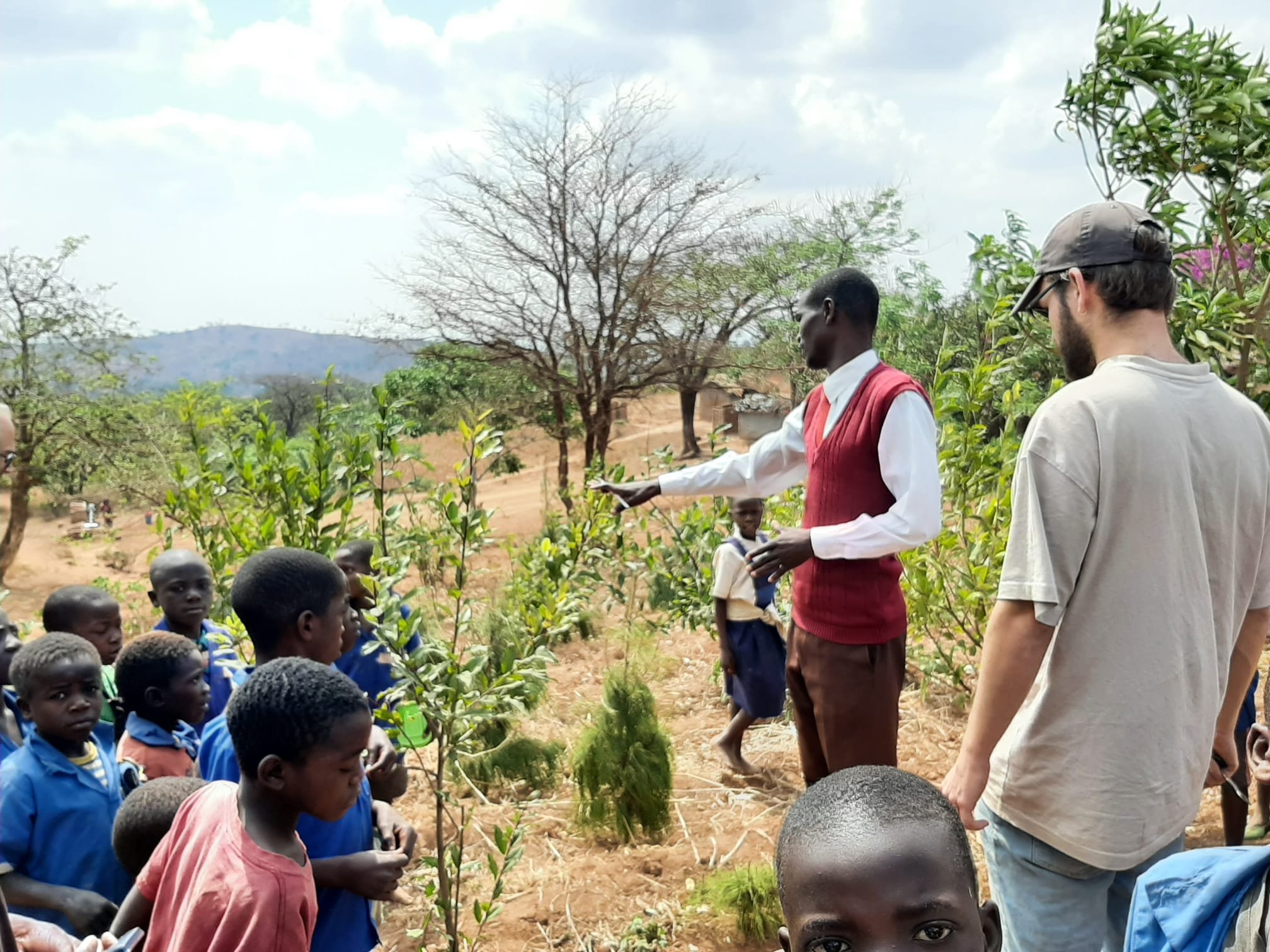Checkup at our tree projects in Malawi
December 8, 2022 — Julia Lemmer and Johannes Sattler
Our dear colleague Julia, whom you have already read about in our post on planting trees in Malawi, was in Ntchisi for a weekend in November. She took the opportunity to see how the trees that were planted there in Jan/Feb 2022 are thriving.
Short wrap-up of our initiative in Malawi (you can find the details here): We had about 500 trees planted at four different schools each as a sub-project of our carbon offset in Malaw. If you are curious to see what 500 trees at a school look like... read on!
Julia visited two of the schools for us. Both schools are located in the Ntchisi region, a very rural area, and are each surrounded by large fields that were previously mostly fallow land. These fields are now home to the trees in question, which are intended not only to absorb CO2 at some point, but also to provide wind protection and shade.
Julia's impressions:
Acacias, which can already provide some shade
The principals were very grateful for the trees - because in schools where there is a lack of everything (e.g. care ratio of 1:100), their own investment in trees would not have been possible.
Both schools proudly displayed how well the trees were cared for. In fact, they were each surrounded by a layer of mulch and well watered. Overall, the trees look healthy. At the elementary school, the principal assured me that he himself, along with his team, was taking care of watering the trees. At the Secondary School, watering the trees is used as a punishment task - one can certainly argue whether this creates a good connection with the trees, but at least they get the water they need.
At one of the two schools it was possible to get an idea of what it will look like when the trees will have grown up, because they had already planted part of their area with acacias from an earlier campaign, which now already provide good shade.
Trees need time to grow - a lot of time. What the upcoming rainy season will bring, we or rather Julia will see. One thing is clear: it will be several years before they remove significant amounts of CO2 from the atmosphere. We are therefore glad that we have not relied solely on trees to compensate for our CO2 emissions, but have already overcompensated by procuring cooking stoves to reduce firewood. For the compensation of our further CO2 consumption, we continuously derive lessons learned and compile different sub-projects for compensation. We’ll keep you updated!


